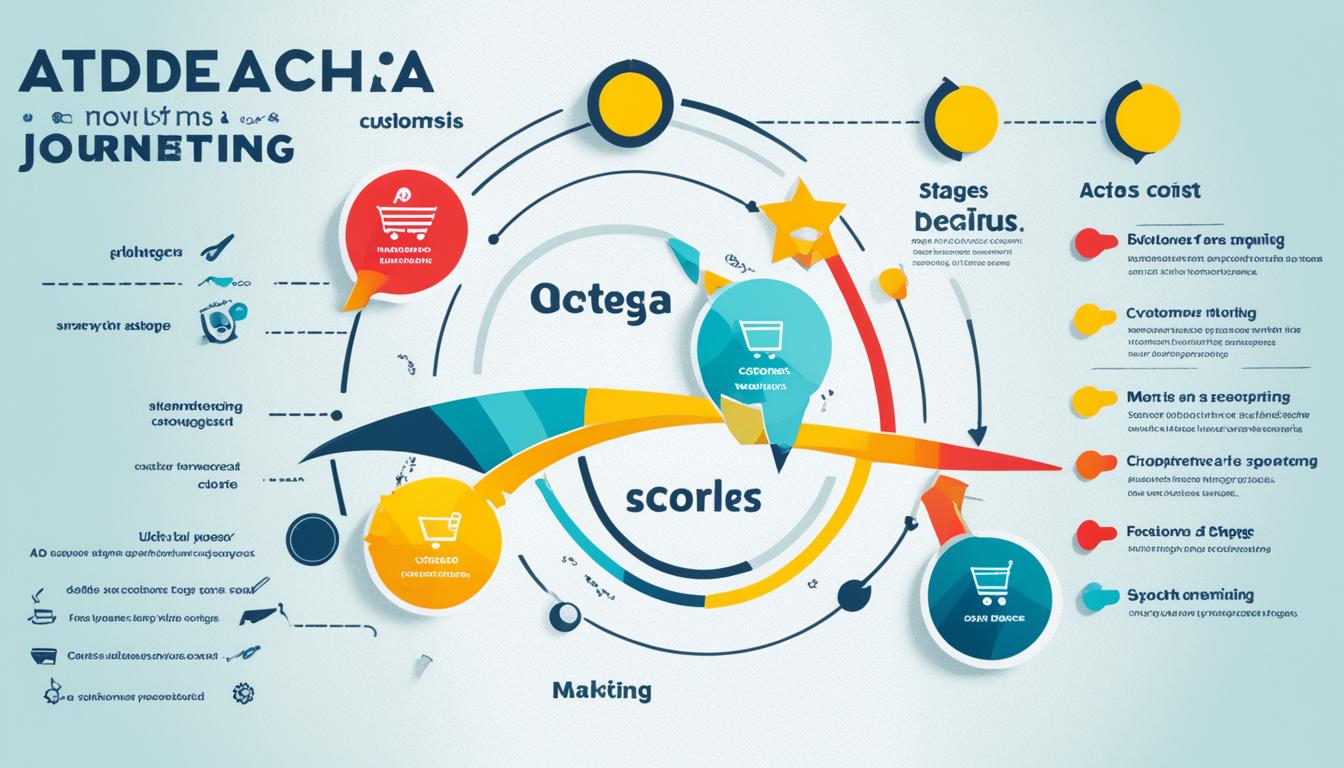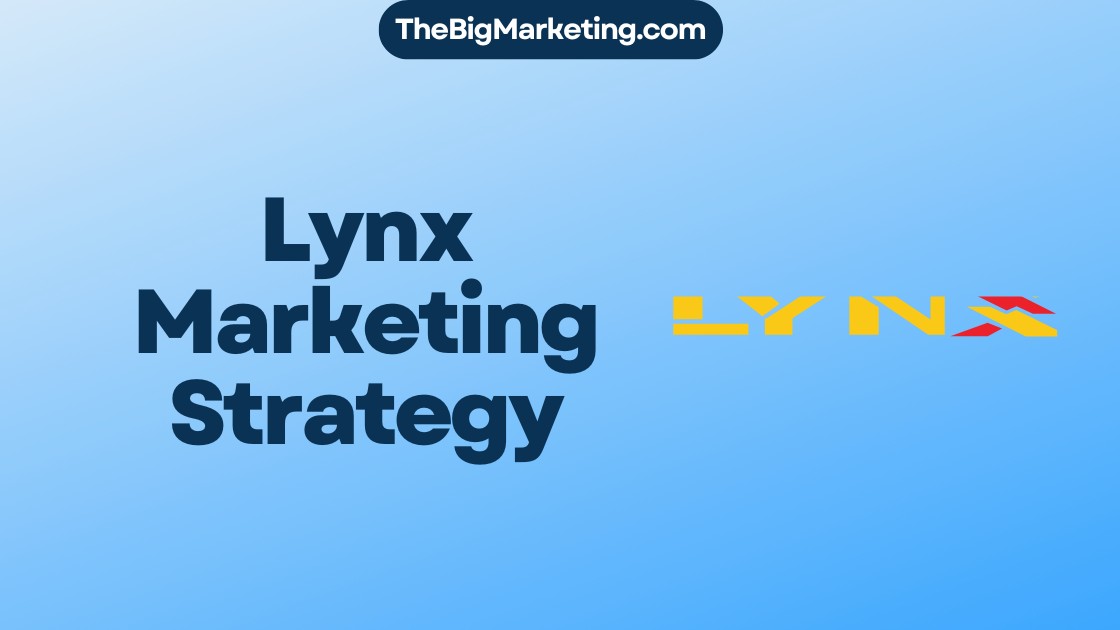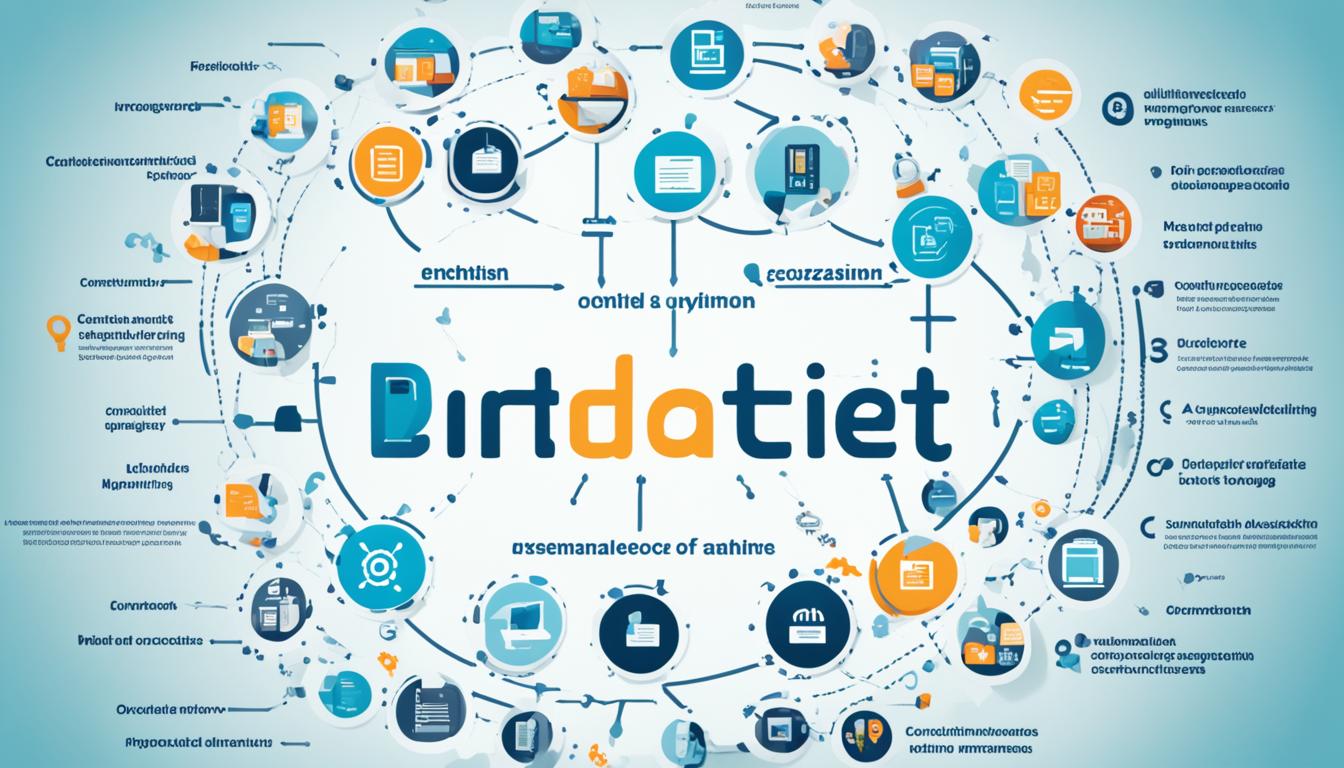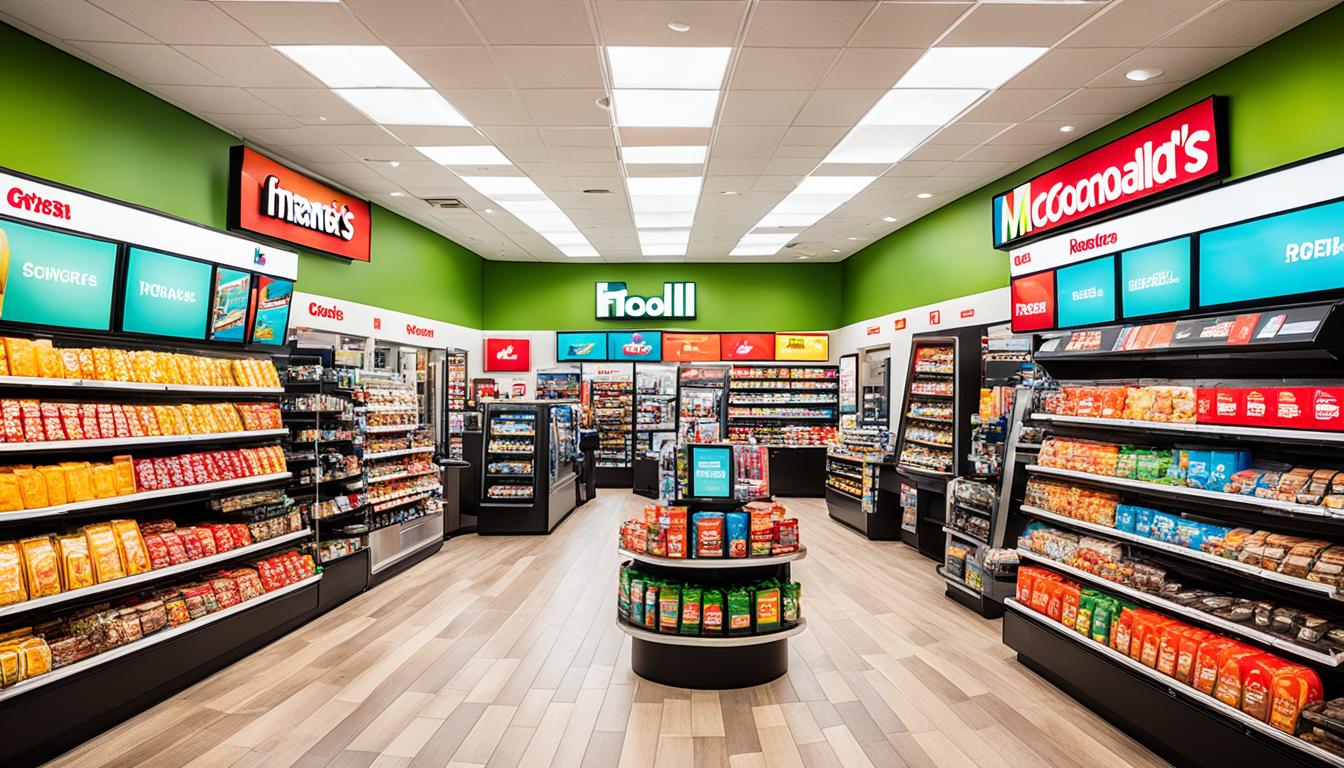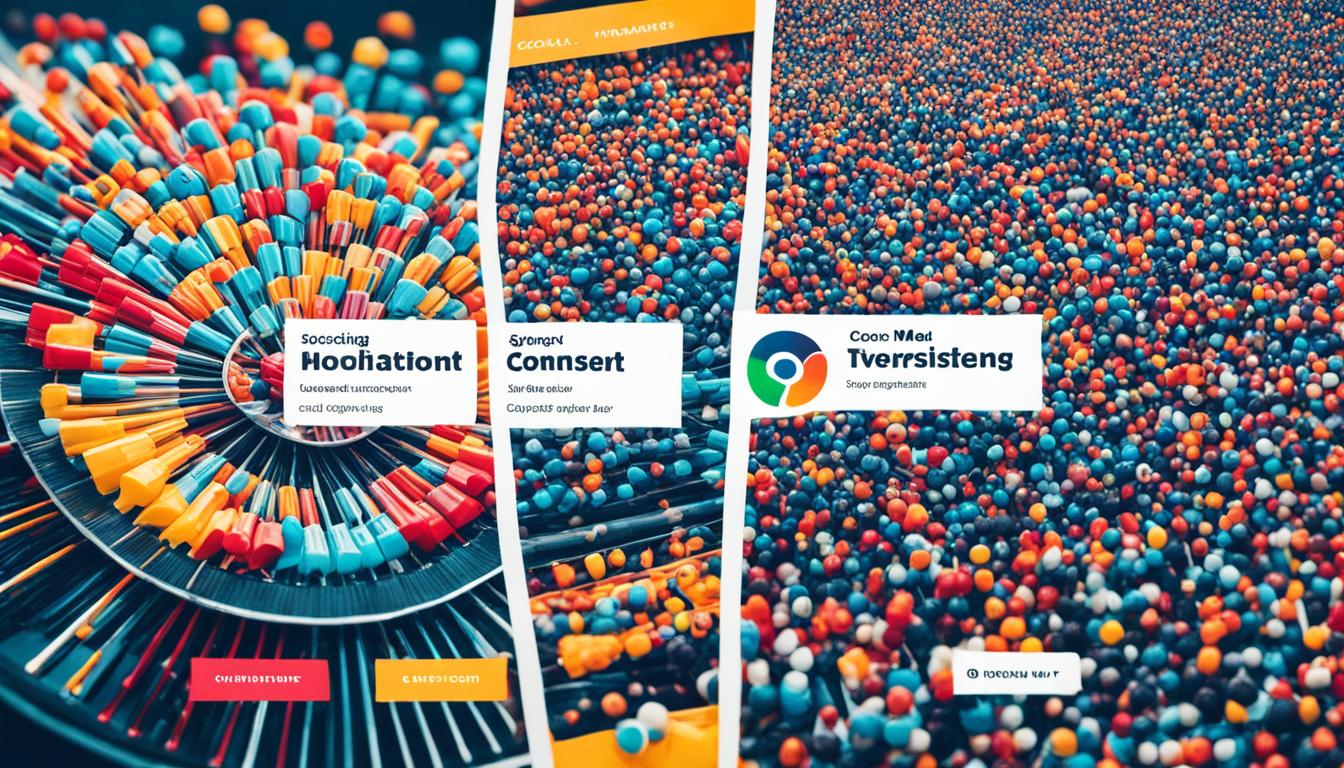Direct response marketing is a dynamic way to get quick results from your audience. It differs from traditional marketing by focusing on getting immediate actions. It’s all about generating leads fast and tracking how well your marketing efforts are doing.
This approach helps in knowing what appeals to your target audience. By crafting compelling calls-to-action, marketers can grab attention. It’s a way to grow your business by engaging with people more personally. It sends out messages that make people want to act right away.
It doesn’t matter if you’re running an online ad or sending out direct mail. Direct response marketing meets your audience where they are. It encourages them to respond, leading to new leads. These leads can then be turned into loyal customers.
Key Takeaways:
- Direct response marketing focuses on generating immediate responses from targeted audiences.
- It enables businesses to track the ROI of their marketing campaigns.
- Clear calls-to-action are crucial in driving consumer engagement and lead generation.
- Direct response marketing can be implemented through various channels, both online and offline.
- Personalization and targeting specific segments can enhance the effectiveness of direct response marketing.
What is Direct Response Marketing?
Direct response marketing encourages consumers to act quickly. It aims to get new leads fast by prompting actions like buying or subscribing. Unlike traditional marketing, which builds long-term brand awareness, direct response lets marketers see the exact return on their investments.
This marketing type focuses on measurable results. Through targeted messaging and clear calls to action, it engages people directly. Businesses can thus trace how well their marketing works, check lead generation and conversion rates, and see their campaign’s ROI.
The campaign’s success lies in its response rate. This rate shows the percentage of users who do what’s asked of them. By creating tempting offers and persuasive copy, and by smartly using call-to-action buttons or links, marketers can boost response rates and hit their goals.
Direct response marketing excels in reaching the right people. It uses data to find and target the ideal customers. This means messages and offers can be tailored, enhancing marketing impact.
Moreover, it offers valuable insights for the future. Analyzing campaign data helps understand what works with the audience. This ongoing refinement boosts campaign efficiency and effectiveness, raising ROI.
Sources:
- Direct Marketing Association (DMA)
- HubSpot
- Neil Patel
Building a Successful Direct Response Marketing Campaign
To create a winning direct response marketing campaign, focus on your audience’s needs. Understand their wishes and issues to craft personalized campaigns. This approach boosts conversion chances and campaign success.
Defining your campaign goals is a crucial step. This could be generating leads, boosting sales, or growing brand awareness. Clear goals steer the campaign’s strategy and execution.
Make your campaign personal to catch your audience’s interest. Use messaging and offers that meet their interests and needs. Show how your product or service benefits them for a compelling appeal.
Clear calls to action are also vital. They should be straightforward and easy to follow. This encourages quick responses and reduces conversion barriers.
Moreover, a sense of urgency can drive higher conversion rates. Highlight limited-time offers or exclusive deals. This pushes your audience to act quickly.
Tracking your campaign’s performance is essential too. Regularly review metrics like click-through and conversion rates. This helps you refine the campaign for better outcomes.
Employing these strategies ensures your direct response marketing campaign’s success. You’ll enhance reach, engagement, and conversions by targeting correctly, setting clear goals, personalizing content, and using compelling calls to action and urgency.
Direct Response Marketing Channels
Direct response marketing can work through social media, digital platforms, email, and more. Each channel helps you directly reach and engage your audience. This leads to immediate responses from them.
Social Media Advertising
Social media ads let marketers target and customize ads for a large audience. They use audience insights to boost brand recognition and engagement. This prompts people to act in ways the ad intends.
Referral Programs
Referral programs turn customers into brand boosters by rewarding them for referrals. This grows your reach and brings in new leads. Rewards for loyal customers tap into their networks, boosting trust in your brand.
Contests and Giveaways
Contests and giveaways engage people and prompt them to create content for you. By offering prizes, you draw attention and increase brand awareness. They make people excited to interact with your brand.
Chatbots and Push Notifications
Chatbots offer direct, instant user communication, answering questions and guiding actions. Push notifications send messages and offers straight to mobile devices. They keep users connected with your brand.
Using these channels, businesses can better reach and engage their audience. Through social media, referrals, contests, and chatbots, you get immediate results. It helps track the success of your campaigns.
Benefits of Direct Response Marketing
Direct response marketing has several key advantages. It’s great for companies looking for measurable outcomes and direct talks with potential customers. It uses trackability, ROI, and direct chat to perfect campaigns and achieve success.
Trackability
One main plus of direct response marketing is you can track it. Marketers use analytics tools and tech to check their campaign’s performance as it happens. This lets them see what works best, understand their audience, and make smart changes for better future campaigns.
ROI
Direct response marketing shows a clear return on investment (ROI). Campaigns aim to get a quick reaction from people, so it’s easy to track money and leads gained from marketing efforts. Knowing the ROI lets companies use their budget wisely for the best marketing results.
Interested Prospects
Direct response marketing helps find and connect with really interested prospects. By offering personalized deals and specific promotions, companies can draw in people looking for what they offer. This targeted method boosts the chances of selling and gets better quality leads.
Direct Communication
This marketing method lets companies talk directly with potential customers. They use emails, social media ads, and direct mail for personal connections. This direct chat builds brand trust and loyalty, leading to lasting customer relations.
Overall, direct response marketing brings many benefits. These include trackability, ROI, reaching interested people, and direct communication. Businesses that use this strategy well can see great, real results from their marketing work.
Example Table: ROI Comparison of Direct Response Marketing Channels
| Marketing Channel | ROI |
|---|---|
| Social Media Advertising | 3.5x |
| Email Marketing | 4.2x |
| Direct Mail | 5.1x |
| Influencer Marketing | 6.3x |
| Search Engine Optimization | 7.5x |
This table shows a comparison of return on investment (ROI) for different marketing channels. It shows how each can give different ROI levels, with search engine optimization at the top. But remember, each channel’s success can change based on the campaign’s goals, the target audience, and the industry.
Best Practices for Direct Response Marketing
To have a successful direct response marketing, you need to use special tactics. These include making offers, writing personalized content, having clear calls to action, creating urgency, and tracking results. All these can make your campaigns more effective.
Specific Offers
Make offers that closely match what your audience wants. When your offers meet their needs, people are more likely to act. This makes them feel your offers are valuable and relevant.
Personalized Headlines and Copy
Using personalized content can really connect with your audience. Write headlines and copy that reach their emotions and goals. This makes them feel recognized and boosts engagement.
Clear Calls to Action
Your call to action needs to be simple and clear. It should be easy to spot and understand. This makes it easier for people to know what to do next.
Creating a Sense of Urgency
A sense of urgency can push people to respond quickly. Use limited-time offers or special deals to create this feeling. This can make people act fast to not miss out.
Trackability and Measurability
Direct response marketing is great because you can track and measure it. Use analytics and unique URLs to see how your campaigns are doing. This can help you make them even better and get a better return on investment.
Example Table: Best Practices Checklist
| Best Practice | Description |
|---|---|
| Specific Offers | Create tailored offers that align with audience needs and desires. |
| Personalized Headlines and Copy | Craft compelling headlines and copy that resonate with audience emotions and aspirations. |
| Clear Calls to Action | Provide concise and visually prominent calls to action that guide consumers through the conversion process. |
| Creating a Sense of Urgency | Highlight time-sensitive promotions or limited-time offers to drive immediate action. |
| Trackability and Measurability | Utilize analytics and unique URLs to measure campaign performance and optimize accordingly. |
Examples of Direct Response Marketing
Direct response marketing can be done in many ways. Each way shows how effective this strategy is. It generates responses and drives conversions. Let’s look at some examples:
Harry’s Referral Program
Harry’s is a well-known shaving brand. They had a successful referral program. This program gave customers free products for referring friends.
By using word-of-mouth marketing, Harry’s got new customers and rewarded the loyal ones.
Land Rover’s Direct Mail Invites
Land Rover makes luxury SUVs. They sent out direct mail invites for a showroom opening. They aimed these personalized invitations at potential customers.
This approach made people feel special and excited. Consequently, more people visited the showroom, potentially increasing sales.
Proactiv’s Infomercials
Proactiv is a skincare brand. They used infomercials in their marketing campaign. These infomercials offered limited-time deals on acne treatment products.
They urged people to act fast. Proactiv’s infomercials boosted sales by telling compelling stories and offering great deals.
Effective Channels for Direct Response Marketing
Direct response marketing uses different channels, each one special in its own way. Picking the right channels can boost your campaign’s impact. Here are some good ones to think about:
1. Direct Mail
Direct mail is a strong option. It lets you talk directly and in a memorable way to your audience. With creative designs and engaging words, it grabs attention and encourages quick action.
You can target certain people or areas with direct mail. This makes sure your message gets to the right folks.
2. Direct Response TV, Radio, and Billboards
TV, radio, and billboards can touch a wide audience fast. TV and radio ads use sound and visuals to catch your audience’s interest. They’re great for sharing your message.
Billboards are seen by many and can focus on specific areas or groups. They’re perfect for campaigns that need a local touch.
3. Digital Marketing
Digital marketing opens a lot of doors for direct response marketing. It includes things like ads on search engines, social media, and email marketing. You can reach people exactly when you need to, with the right messages and strong calls-to-action.
It also lets you track how well your campaigns are doing. You can fine-tune your strategy with this insight.
4. Other Channels
There are other channels too, like influencer marketing and mobile marketing. Influencers can recommend your product to their followers. Mobile marketing, through texts or push alerts, talks directly to people on their phones.
Knowing the strengths of each channel helps you pick the best ones for your goals and audience. Using a mix of channels can expand your reach, improve response rates, and make your campaigns more successful.
Conclusion
Direct response marketing is a great way to generate leads and get high returns on investment (ROI). By knowing what the target audience wants, making irresistible offers, and using clear calls to action, marketers can win at direct response marketing.
Adding personal touches and creating a sense of urgency are key to better results. By customizing campaigns for each customer and making the offer seem urgent, marketers can get more responses and more conversions.
Also, using different channels like social media ads, direct mail, and online marketing helps reach more people. This approach allows marketers to engage with various parts of their audience more effectively.
In the end, direct response marketing is solid for quick lead generation and measuring campaign ROI. By following best practices, focusing on the right audience, and picking effective channels, companies can see strong growth from direct response marketing.

